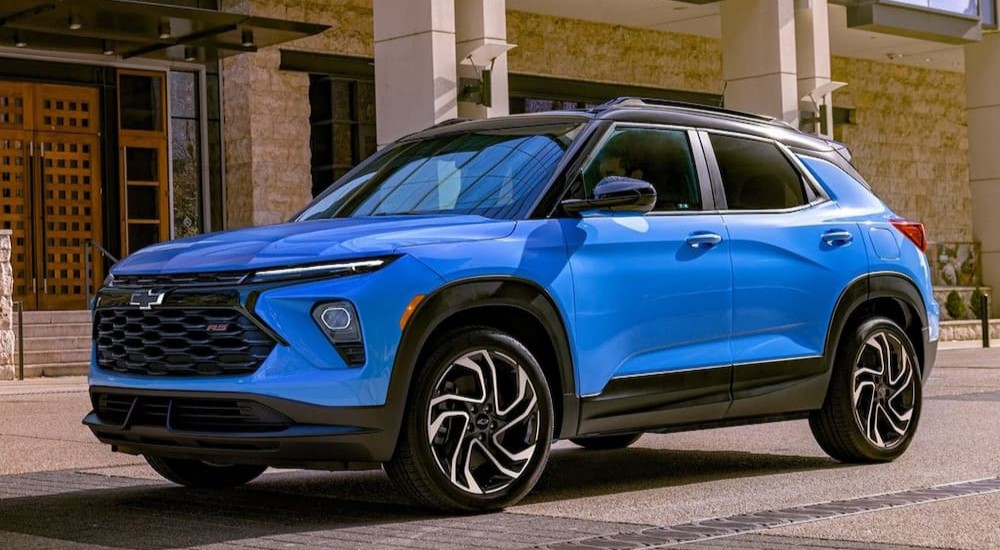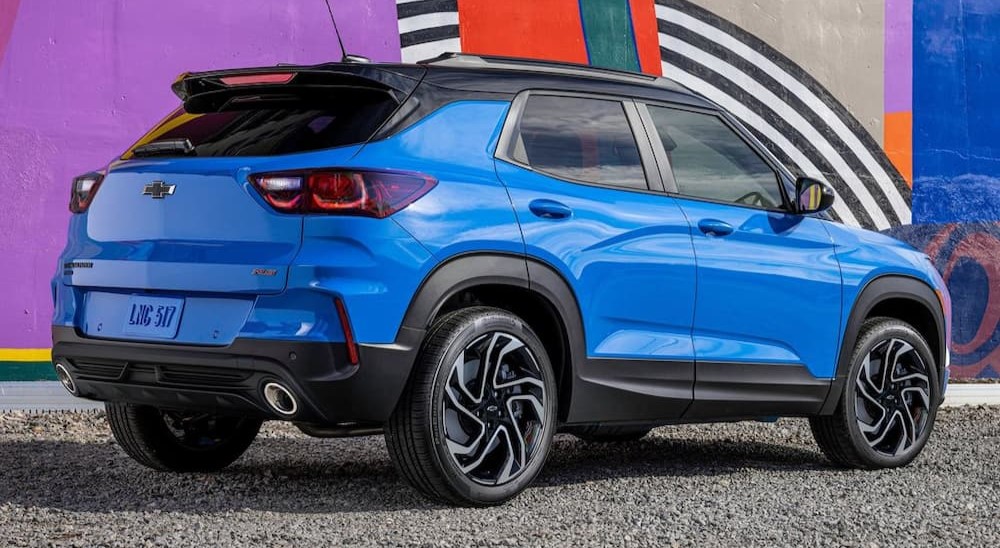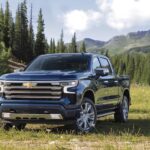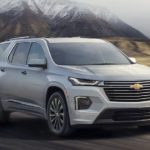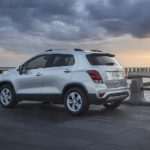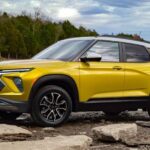The new 2024 Chevy Trailblazer includes more standard technology than ever before. For many drivers, this is a good thing. After all, technological advances in automotive engineering have allowed us to build cleaner engines, safer braking systems, and greater comfort when driving. That being said, there are many drivers who feel that practical features are being too quickly replaced by technology, sometimes without need.
There’s no “right” answer to this debate, because everyone has their own level of comfort with both technical and analog devices. However, it can’t be denied that technology is everywhere in today’s automobiles, and the 2024 Chevy Trailblazer is no exception.
Historically speaking, the Trailblazer celebrated the SUV’s rugged, feral sensibilities. Today, it seems to herald an era of practical, albeit “new-fangled” engineering to create a safe, affordable, enjoyable automobile. Is the 2024 Trailblazer the best version ever, or is it too much of a far cry from what seasoned drivers have come to love from the brand? Let’s consider the journey of the Chevy Trailblazer, from iconic trim to today’s tech-forward, super-enhanced mid-sized SUV.
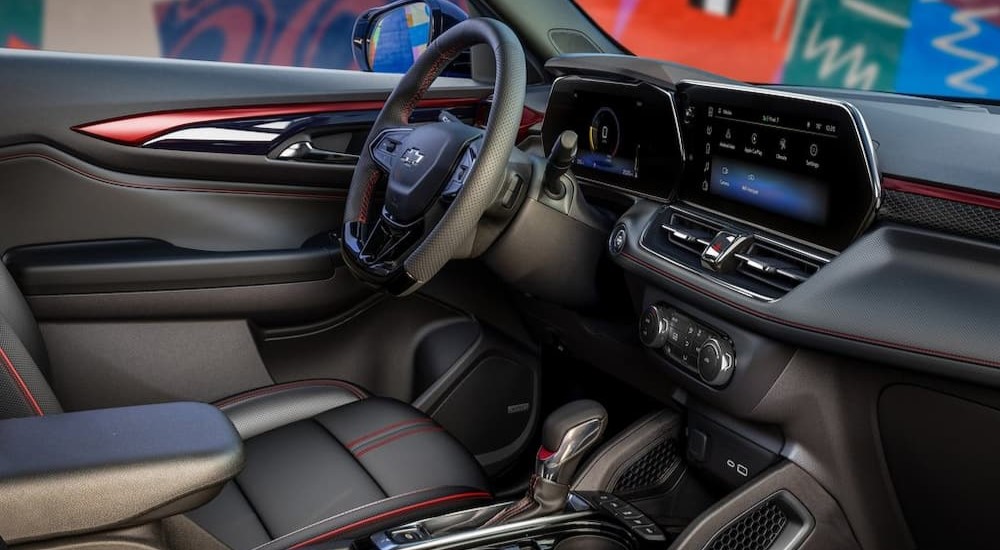
Driving Like It’s 1999: The Humble Early Trailblazer
“Humble” isn’t exactly the right word to use here, since the first TrailBlazer was an upper-level trim of the Chevy Blazer. When the trim transitioned into its own brand in 2002, it wasn’t exactly a simple automobile by 2002 standards. Technology has made huge leaps and bounds, in even base models, over the past 20 years.
The target audience for the inaugural Trailblazers was the middle-class driver who needed room and a touch of ruggedness without compromising safety. As a result, Chevy decked out these early SUVs with state-of-the-art family-friendly equipment, such as anti-lock brakes and front and side impact airbags. Standards were a lot different back then, so while these weren’t cutting-edge technology, they still weren’t standard equipment on most vehicles.
In 2003, Chevy offered a three-row extended-length version of the Trailblazer, called the EXT, attempting to adequately capture all the needs of the target driver. Boasting over 100 cubic feet of cargo room and the ability to tow up to 7,200 pounds, this behemoth Trailblazer was discontinued with the 2006 model year. Features remained standard for the era. The 2003 North Face Edition boasted weather-resistant upholstery, rain sensing windshield wipers, a liftgate luggage rack, and a clothesline feature for drying out adventure gear, but no satellite navigation or blind spot monitoring. There was certainly no Android Auto or Apple CarPlay connectivity, because this hadn’t been invented yet.
Come and Go: The Second Coming of the Trailblazer
The songwriter Donovan once sang, “First there is a mountain, then there is no mountain, then there is.” This is more or less what happened with the Trailblazer. After gaining momentum with a 395-horsepower SS model, four-wheel anti-lock brakes, an early iteration of StabiliTrak electronic stability control, and practical features like a standard power liftgate release, rear window wiper and washer, Chevy’s Trailblazer checked off a lot of drivers’ needs and wants without requiring an Alpine ascent into the higher trims.
On top of that, drivers could add a power moonroof, a rear seat entertainment system with DVD player, touch-screen navigation, and more. In 2009, the Chevy Trailblazer’s OnStar system included Bluetooth hands-free phone connectivity for the first time. Then, suddenly, the Trailblazer disappeared from the market once again.
Things Changed While You Were Gone: The Latest Trailblazer
Fast forward to 2021, and suddenly the Trailblazer is back, only there’s something different this time around. It goes without saying that change is rapid and inevitable in the automotive industry, especially in the highly competitive SUV segment. While the Trailblazer was awaiting its triumphant return, things like Chevy Safety Assist, smartphone integration, and multiple USB ports became standard across all mid-sized SUVs. The Trailblazer of yore didn’t stand a chance.
In its first year back, the new and improved Trailblazer included standard forward collision alert and lane-keep assist, Chevy’s Teen Driver system, and a seven-inch touchscreen infotainment system with Bluetooth connectivity. Drivers could peruse the trims for upgraded features like keyless open, remote start, adaptive cruise control, and wireless phone charging, but they were easy enough to obtain.
Perhaps one of the most interesting turn of events was that between generations, Chevy swapped out its focus on powerhouse engines to offer a more economical version of the SUV. Today’s Trailblazer comes equipped with either a 1.2-liter or 1.3-liter turbocharged inline-3 engine. The larger engine provides a respectable 155 horsepower and 174 lb-ft of torque. It’s far more economical than the engines of old, with even the notoriously thirsty all-wheel drive version making 26 miles per gallon in the city and 30 miles per gallon on the highway. In 2009, the smallest engine was a 291 horsepower 4.2-liter inline-6 that got a mere 15 miles per gallon city and 21 miles per gallon highway. In contrast, the new Trailblazer’s smallest engine makes 137 horsepower and 162 lb-ft of torque, and gets 29 miles per gallon in the city and 31 on the highway in front-wheel drive trim. It’s clear that Chevy has used their technology to enhance practicality in this case.
Which Brings Us to Today
The term “tech-forward” is a bit broad. When you think about it, it could mean practically anything, from turbocharged engines to new building techniques that both increase strength and reduce weight. However, it seems that most people who talk about “tech-forward” vehicles are pointing to their digital features, their touchscreen infotainment systems, and the number and quality of safey and driver assistance features they possess.
Some drivers are willing to try a little technology, as long as it makes sense. Lots of Chevy drivers are big fans of the HD Rear Vision Camera, which comes standard on the 2024 Trailblazer. But what about the more “newfangled” tech toys, the kind we couldn’t find on a 2009 model? Do we really need things like an eight-inch digital driver display, which takes the place of what we once called the “gauge cluster?” Similarly, the standard 11-inch infotainment touchscreen entirely lacking buttons and knobs brings up somewhat divisive issues among drivers.
The debates rage on: Is it more practical for drivers to constantly learn new technology in order to promote overall safe driving behavior? Or would it be less distracting to allow drivers to have the “old school” technology that they’re used to? Did this particular wheel need to be reinvented? For the Chevrolet Trailblazer, the answer is a clear “yes.” With standard safety, driver assistance, and distraction-limiting features in each model, it seems obvious that Chevy is invested in encouraging safe behavior with new technology.
The Practical Side of Technology
Admittedly, there is a learning curve when using features like adaptive cruise control and automatic emergency braking for the first time, both of which are offered on the 2024 Trailblazer. However, it’s a bit like riding a bicycle. Once you learn it, you know it, and you don’t forget how to use it.
Technology can be thanked for much of the 2024 Chevy Trailblazer’s features, from its highly economical engine to the ACTIV model’s off-road suspension tuning. While we may be tempted to argue about whether digital or analog is better, it’s clear that technology such as the Chevy Safety Assist suite of driver assistance features has a highly positive influence on driver behavior and collision reduction.
Many drivers can agree that “practical technology,” like Bluetooth hands-free audio, has a place in today’s mid-size SUV. Furthermore, Chevy understands that sometimes, less is more, allowing each trim level to have a unique array of technology that allows each driver to select the Trailblazer best suited for their drive.
